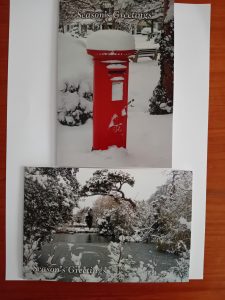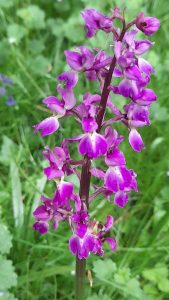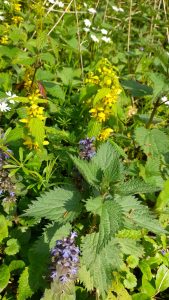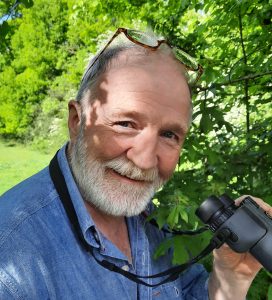Students from St Oscar Romero School in Goring-by-Sea, along with their teachers, were recently treated to a fascinating overnight moth-trapping experience, thanks to the expertise of Dr Tim Freed – a leading entomologist and member of the Ferring Conservation Group.
This event is part of a growing partnership between Ferring Conservation Group and the school’s Fingerprint Ambassadors – a dedicated group of students passionate about environmental issues. For the past two years, this collaboration, overseen by Phil Dean, the school’s Careers, Enrichment and Outdoor Learning Leader, has helped foster greater awareness of local biodiversity and conservation efforts within the community.
On the evening of 16th July, Tim set up two Robinson moth traps within the school grounds. At 6pm, students and staff gathered in a classroom to hear an engaging introductory talk from Tim, who explained the vital role moths play in the ecosystem. He introduced the group to a variety of species, their habits, life cycles, and the importance of biodiversity.
Following the talk, the group enjoyed a barbecue—cooked to perfection by Phil Dean on the school grounds—as they made final preparations for their overnight camp, securing tents and discussing the evening’s activities.
As dusk fell, Tim led the students and teachers to the first moth trap, positioned among some rough grassland near one of the classroom buildings. The group was delighted to find a healthy variety of moths had already been attracted to the trap’s bright light. The second trap, located in a darker corner of the school playing field, near a row of poplar trees and away from light pollution, proved equally successful.
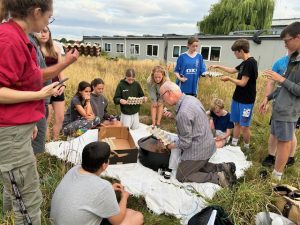 With high hopes for a rich haul in the morning, the students and teachers retired to their tents, eager for an early start.
With high hopes for a rich haul in the morning, the students and teachers retired to their tents, eager for an early start.
After a night under canvas, the group rose early to join Tim who had returned at first light to check the traps and make a quick assessment of the catch. Together with the students he reviewed the final contents of the traps. His expert commentary brought each species to life, making for an unforgettable learning experience that combined hands-on science with real-world ecology.
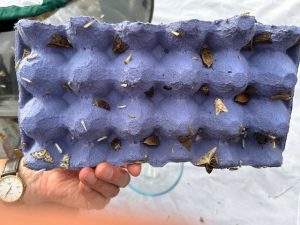 In total, over 135 species were recorded across the traps. Star attractions were several Poplar and Elephant Hawk-moths and a solitary Pine Hawk-moth. A number of migratory species were present including the rare Golden Twin-spot, and well-over 1000 Willow Ermine were noted. Interestingly, 98 species were recorded at both the Classroom site and the Poplars site, reflecting the ecological richness of each location. Both traps produced a number of interesting finds, including moths typically associated with riverbank habitats—an indication of the influence of the nearby Ferring Rife corridor, which intersects the broader Chatsmore Farm landscape.
In total, over 135 species were recorded across the traps. Star attractions were several Poplar and Elephant Hawk-moths and a solitary Pine Hawk-moth. A number of migratory species were present including the rare Golden Twin-spot, and well-over 1000 Willow Ermine were noted. Interestingly, 98 species were recorded at both the Classroom site and the Poplars site, reflecting the ecological richness of each location. Both traps produced a number of interesting finds, including moths typically associated with riverbank habitats—an indication of the influence of the nearby Ferring Rife corridor, which intersects the broader Chatsmore Farm landscape.
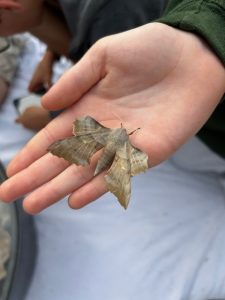 The Classroom site, with its rough grassland, scrub, and proximity to gardens, proved to be a surprisingly valuable area with numerous grassland species present as well as a good variety of butterflies seen there during the day. At the Poplars site, which features railway-side vegetation and mature woodland, several uncommon and local species were recorded including the Olive, Cnephasia longana, Gypsonoma minutana, Sitochroa palealis and Synaphe punctalis. Several species were common to both traps.
The Classroom site, with its rough grassland, scrub, and proximity to gardens, proved to be a surprisingly valuable area with numerous grassland species present as well as a good variety of butterflies seen there during the day. At the Poplars site, which features railway-side vegetation and mature woodland, several uncommon and local species were recorded including the Olive, Cnephasia longana, Gypsonoma minutana, Sitochroa palealis and Synaphe punctalis. Several species were common to both traps.
(Pictured – female Poplar Hawk-moth)

